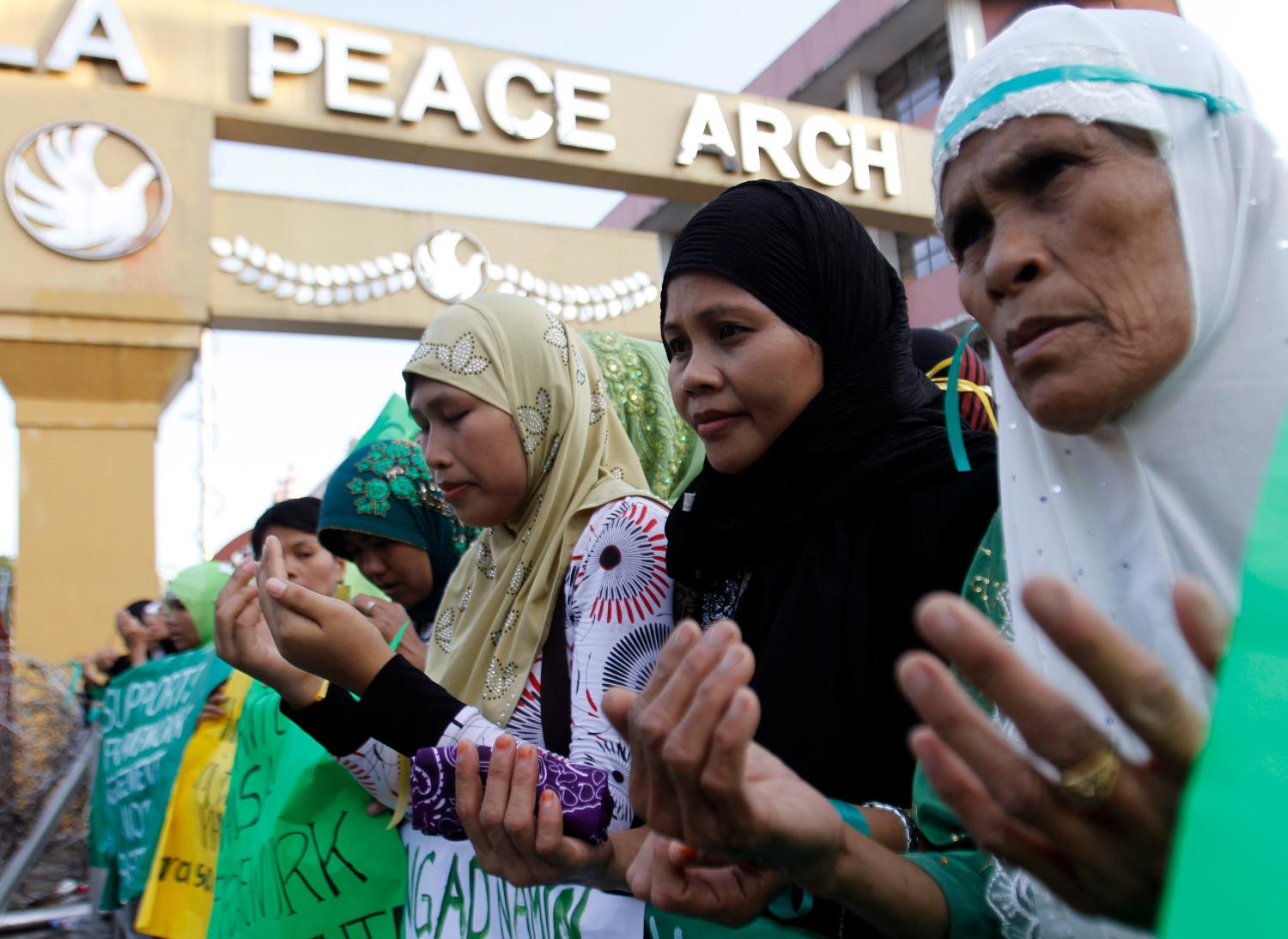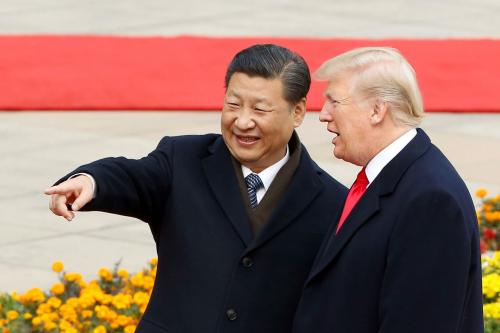Internal displacement has confronted Mindanao populations of the Philippines for more than five decades, dating back to the height of the so-called “Muslim-Christian conflict” in the early to mid-1970s. Displaced communities encounter a range of vulnerabilities as they face a whole new milieu in which their familiar systems of social protection, including livelihoods, are gone or fragmented due to forced evacuation.
This study on gender and livelihoods among internally displaced persons (IDPs) is based on fieldwork conducted from October to December 2012, in three areas in Central and Southern Mindanao (Notre Dame Village, Cotabato City; Datu Piang, Maguindanao Province; and Sitio Pananag, Barangay Lumasal, Maasim, Sarangani Province). Fieldwork data gathering techniques included key informant interviews with government officials and civil society leaders, as well as focus group discussions with “protracted” IDPs in the three areas.
Key findings and recommendations
The key findings of this study are presented below, followed by recommendations for research, policies and programs.
A. The gender dimensions of conflict and the deprivation of livelihoods in displacement
War affects men and women differently, and this is perhaps most glaringly felt in the loss of livelihoods. Since men are the primary combatants in war, they are the first to disappear from the public sphere they used to move in as entrepreneurs, skilled workers, and merchants. Conscription into rebel or government groups or as parties to clan war forces men to abandon their economic responsibilities toward their families. In Mindanao, such a scenario has paved the way for women to assume leading economic roles, pushing them to navigate public spaces denied to them before conflict. But, assuming leading economic or even political roles does not automatically make displaced women empowered given that they are still expected to perform traditional nurturing roles. Instead, assuming breadwinning roles left by their husbands can often be a source of strain.
Young women and children in displaced communities are also vulnerable to human trafficking. Conflict-prone areas, such as the provinces in the Autonomous Region in Muslim Mindanao, are major sources of trafficked victims. Predatory traffickers, including relatives of the women and children, look at them as a “resource” for capital generation, through recruitment to work abroad as domestic helpers or worse, as sex slaves.
For displaced men, the loss of livelihoods is often equated with their loss of face, as it renders them “powerless” to still be the breadwinners and economic leaders in their families.
B. Restoring or accessing new livelihoods and helping to address gender equity
Displaced men and women alike in the three areas studied tried to find ways and means to survive, either through attempts to restore former livelihoods or by accessing new ones. However, restoring former livelihoods is often not a viable option, as the enabling environment was absent in the place of evacuation. While opportunities to access new livelihoods in the place of displacement were essential to the displaced community’s survival, gender equity, particularly in terms of decision making and control of resources in relation to livelihoods, was still rare among IDPs.
C. Internally displaced women as agents for positive change
Studies have shown that women have played crucial roles in the settlement of petty community conflicts, as well as in working toward more sustainable processes of conflict transformation, especially in the Mindanao context. When women manage cooperatives or lead local committees, such endeavors have greater chances of success than those run by men. In evacuation centers, internally displaced women are also the first to seek out assistance from various outside sources while the men typically “command” the women on what to do. Displaced women are also usually among the first who organize the community into different committees to manage the evacuation camp, especially with regards to the distribution of relief goods.
D. Livelihood strategies and the rights and well-being of internally displaced women
Key informants underlined that access to viable livelihoods enhances the enabling environment for peace. However, this depends on many factors, such as the types of livelihoods supported by donor agencies. Access to livelihoods is not a guarantee that durable solutions to displacement will be achieved and that gender gaps will be reduced, as men may wrest control of the livelihood opportunities and gains associated with them. Providing increased incomes for women may not necessarily mean they have full control of the financial gains because the men may still invoke their proprietary rights over the women. As shown in other conflict contexts, men may resent women’s access to resources and may subject women to domestic violence.
E. The potential contributions of innovative livelihood initiatives to peacebuilding
Skills trainings for displaced women need to include job opportunities in relevant industries. This can be a problem, however, when there are no industries willing or able to absorb the trainees after they finish. Displaced communities are often in areas where there are limited investment opportunities for private sector groups. There is a need, therefore, to create a demand side to this equation, by encouraging more private sector investments near areas affected by forced migration due to armed conflict.
Creating a demand for trainees among displaced populations could be an innovative approach, as it not only paves the way for gainful employment after training, but it can also set the stage for enhanced confidence building, thus increasing levels of social capital among diverse communities in Mindanao. Investments require high levels of trust among partners. This is not only meaningful but also challenging when investors belong to ethno-linguistic groups that used to have high levels of distrust or prejudice against Muslims or indigenous peoples.
Recommendations
Based on the above key findings, this study makes the following set of recommendations:
A. Research and analysis
Further in-depth studies are needed on the links between peacebuilding initiatives and poverty reduction, especially in conflict-prone communities. These can inform policy makers and government decision makers alike to enable communities to become more resilient in the face of chronic displacement. Feasibility studies on innovative village-level savings and loans programs need to be explored, especially those schemes that follow Islamic guidelines on investments where both clients and investors share profits and losses equally. More studies on security measures for displaced women and girls are needed, starting with the investigation of sexual harassment and other forms of gender-based violence, and human rights violations of displaced women. These studies should include incidences of human trafficking in displaced communities. A thorough review should be conducted of policies on the recruitment of female workers, especially those coming from vulnerable, displaced communities, with a view to providing stronger social protection for women recruited for dangerous or potentially exploitative work. More thorough gender analyses need to be conducted among displaced communities to accurately determine the varying needs and capacities of displaced men and women.
B. Policies and programs
Economic empowerment programs for women should have built-in guidelines for the protection of women, and local legislation or ordinances should be formulated to institutionalize these guidelines. Based on gender analyses, assistance programs should be appropriately tailored with a view toward reducing gender inequalities in displacement contexts. Donor agencies should insist on the mainstreaming of gender into the entire project cycle as a requirement for accessing funding and project implementation, to ensure that projects address the different needs and capacities of women, men, children and other potentially vulnerable internally displaced persons. IDPs living outside of evacuation centers should be included in databases of displaced communities. A thorough, gender-sensitive assessment of IDPs’ needs and capacities should be conducted in order to enable the design of relevant and sustainable socio-economic programs to help them regain or establish sustainable livelihoods. Local ordinances on the status of displaced persons should be revisited in host communities where IDPs have decided to stay more or less permanently. Ordinances on “informal dwellers” need to be revisited as they are incompatible with the rights of IDPs to free movement, and hinder their abilities to establish sustainable livelihoods.
The Brookings Institution is committed to quality, independence, and impact.
We are supported by a diverse array of funders. In line with our values and policies, each Brookings publication represents the sole views of its author(s).



